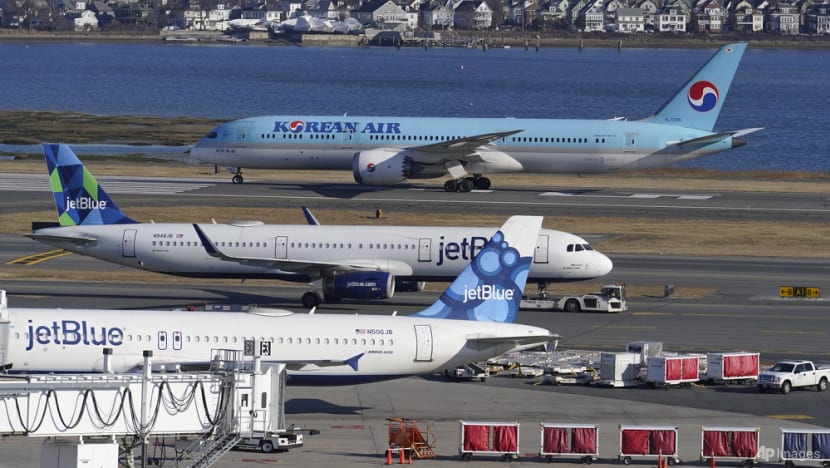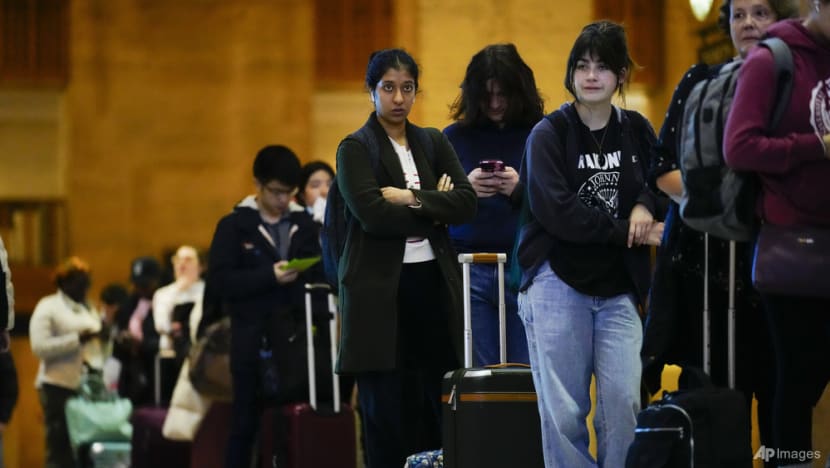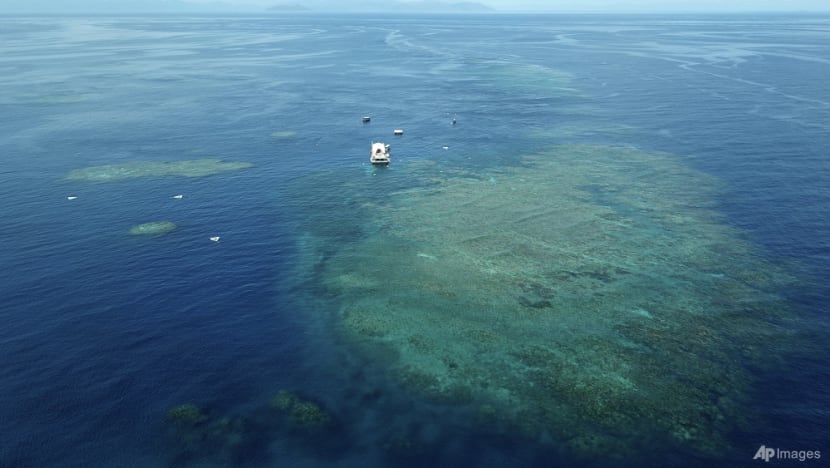Global travel surge raises concerns, as local communities tackle over-tourism amid sustainability challenges
With global travel forecasted to top 1.8 billion tourists by 2030, the sector will be one focus of COP28, the United Nations-led climate talks in Dubai.


This audio is generated by an AI tool.
As global travel takes off again, destinations are facing the challenges of over-tourism and other downsides of having too many visitors.
With travel forecasted to top 1.8 billion tourists by 2030, the sector will be one focus of COP28, the United Nations-led climate talks in Dubai, which commence on Thursday (Nov 30).
Besides over-tourism, the pursuit of sustainable travel has also led to negative trends, such as “voluntourism” and “last-chance tourism”.
Local communities across Asia have taken measures to protect their spaces, including closing popular beaches and harnessing technology to track visitor numbers at tourist hotspots.
Apart from pressures on ecosystems and local residents, the movement of millions of people around the globe also takes a major toll on the planet through the release of emissions and pollution.
OVER-TOURISM
While tourism is beneficial for local communities, there is a darker side to the problem of plenty.
The impact of over-tourism is being felt across Asia. For instance, one study showed that Thailand’s biggest island, Phuket, hosts 118 tourists for every one local resident.
Mr Wouter Schalken, senior tourism development specialist at the Asian Development Bank (ADB), told CNA it is a cause for concern and that active interventions should be put in place to address the trend.
“The recovery after the pandemic has been a lot quicker than was anticipated, and we seem to have forgotten some of those objectives of trying to do better, making sure we don't move into the traps that we saw before COVID hit us globally,” he said.
Tourism authorities are trying to strike a balance between making visitors feel welcome, and protecting locals and natural environments.
Some destinations have taken tough measures to cope.

Popular Philippine beach getaway Boracay, for instance, was abruptly closed for a period of six months in 2018 for rehabilitation, shocking business operators, airlines and locals alike.
Meanwhile in the Japanese city of Kyoto, visitor numbers at tourist hotspots are tracked using technology, such as real-time information from live cameras to help visitors avoid congestion.
While tourism numbers may be up, the mood of local communities is less so, as the impacts of over-tourism bite hard.
Mr Masaru Takayama, chairperson of the Asian Ecotourism Network, cited Japan as a destination on many people’s travel shortlist.
“It is best to have a sustainability policy in place where management is taking place to control not only the number of visitors, but also telling them the code of conduct and spending more time to measure what is really happening on the ground, rather than spending on the promotion,” he said.
“A lot of destinations still have a huge budget for promotion, but when tourists do come, they (authorities) behave like they are not responsible for creating a destination for over-tourism.”
LOCAL COMMUNITIES ADAPT
Local communities too have had to adapt to the conservation of popular tourist destinations, which play a key part in the economy.
Located in the foothills of the Indian Himalayas, Jim Corbett National Park, established in August 1936, is one of the oldest parks in India. It has long faced the challenge of managing over-tourism head on, especially after it was designated as one of the first tiger reserves in the country in 1973.
The national park has the highest density of the big cats among the 52 reserves in India, which is home to 90 per cent of the world’s last wild tigers.
However, it too has not escaped the impact of India’s population density.
Mr Haren Khatau, director of Infinity Resorts, which runs eco-conscious hotels including one on the periphery of Jim Corbett National Park, told CNA: “Earlier, we had a very wildlife focused clientele, and lately it's been more towards the burgeoning middle class. Lots of domestic tourism has now become the forefront of the customer base that we cater to, so of course this presents us with new challenges.”

The boom in the number of tourists in the so-called buffer zone has brought more noise and traffic.
There is also a growing number of villages in the area that are dependent on the park for basic needs such as fuel and food.
In 1995, a scheme was introduced by The Corbett Foundation, a non-governmental organisation founded by Dilip Khatau, to give on-the-spot financial assistance to villagers whose cattle had been killed by a tiger or leopard in the buffer zone.
This has eliminated any poisoning, killing or poaching of tigers or leopards in the Jim Corbett National Park landscape, and increasing their population there.
SUSTAINABILITY OF TRAVEL
Prof Winston Chow, associate professor of urban climate and Lee Kong Chian Research Fellow at the Singapore Management University, noted that “highly carbon-intensive, long-range travel by aviation is not good for the planet”.
Research has shown that as much as 10 per cent of global carbon dioxide emissions are caused by the tourism sector, with a majority produced by journeys to and from a destination.
Mr Schalken said that travel has become a lot quicker, with travellers and industry players making shorter-term decisions on trips.
“In the early days, people started planning routes a few years in advance. Now it's three months, and before you know it, there's air traffic coming in for which a destination is not ready,” he said.
“It’s even more urgent now with the influence of climate change, which is basically going to double, if not triple, the negative challenges of some of these over-tourism impacts that we are seeing.”
By 2030, 57 per cent of an estimated 1.8 billion international travellers globally will be in emerging economies, studies have shown.
Mr Schalken emphasised the need for locals living in tourism hotspots to be able to benefit from the development too.
“It doesn't mean that they all need to be employed in tourism. Tourism is not for everybody. But if the shared resource impacts them, then there should be compensation,” he said.
“We can't expect them to look after pristine beach areas and not see any return for the care that they put into that.”

Mr Takayama said employing responsible tour operators who are certified by a third party to have sustainable practices, would ensure that the services on offer will make a positive impact.
The barriers to sustainable tourism are now lower, such as through the growing of edible gardens in the city, or innovative design solutions in hotels.
Faber Park Hotel in Singapore, for instance, has done away with complimentary water bottles and instead, installed water filtration systems in every room.
TRAVEL TRENDS AND PRACTICES
With the world slowly emerging from the pandemic, travellers splurged on vacations despite the high costs of airfares. However, there are signs the pent-up demand from “revenge travel” has started to wane this year.
In its place, domestic vacations have emerged as a sustainable form of travel, with 90 per cent of internet users saying they have one already planned for 2024.
Most, especially younger people, are driven by their concerns about their carbon footprint.
However, Prof Chow said that when people travel, they tend to switch off in terms of their sustainability knowledge and principles.
“You need to make sustainability a way of life, and I see evidence of that happening in the younger generation – your Gen Zs or your post-millennial crowd,” he said.
“They understand that the climate and the world that they inherit from us is not going to be in the best of health, and they are taking up the mantle of sustainability very rapidly, through civil society actions, through being influencers, or spreading the message around on sustainability, even when travelling or in everyday life.”
Travel influencers globally have emerged as a big driver of the sustainability message, as tourism and climate change acceleration become increasingly intertwined.

Online travel platform OhThePeopleYouMeet, for instance, is a global collective of creators who curate content for travellers who want an authentic local connection while prioritising the planet's health.
However, controversial themes have emerged in this sustainability pursuit, blurring the lines between doing good and doing harm.
One such theme is “voluntourism”, which markets itself as a seamless blend of charity and leisure, as visitors can give back to the local community.
Voluntourism agencies reap billions from their clients’ good intentions, organising trips for over 10 million people yearly.
Another theme is “last-chance tourism”, in which people travel to see some of nature’s marvels with their own eyes before they disappear forever.
A 2016 study revealed that the decline in the health of Australia’s Great Barrier Reef had motivated more travellers to visit, while travel to Greenland’s melting glaciers or Arctic Canada’s ice sheets is also on the rise today.

Prof Chow said that while such travellers may learn about sustainability and responsible climate action, whether they practice it is another question.
“Whether or not this messaging can actually penetrate through to these people who have more resources to travel more often, that's going to be a problem,” he said.
Travel and tourism will serve as the test bed for sustainable changes as the world pursues its net zero targets.
While there may be no single global blueprint for building a sustainable green travel framework yet, partnerships are growing across Asia to actively promote sustainable practices at the national and local levels.
















